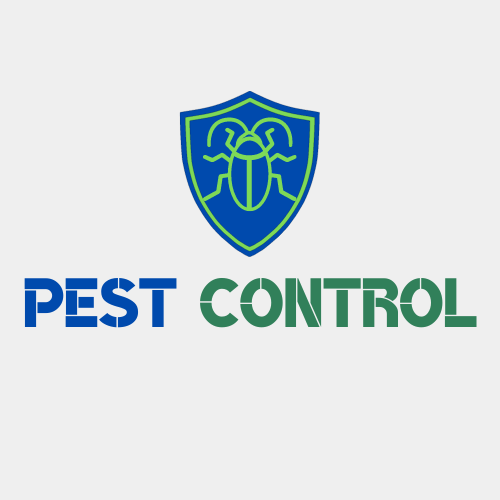Effective Pest Control Strategies for Industrial Areas: Best Practices for Compliance and Safety
In the realm of pest control, ensuring the safety and hygiene of industrial areas is paramount. Each facility faces unique pest management challenges, particularly in high-risk industrial zones. These challenges necessitate a comprehensive approach to pest control, integrating industry standards and compliance measures that not only protect the premises but also enhance relationships with regulatory authorities.
Understanding the Importance of Pest Control in Industrial Settings
Pest infestations can lead to significant health risks, financial losses, and reputational damage for businesses. In areas such as 67280 Viviendas, Magdalena, Juárez, where the potential for pest-related hazards is heightened, it’s crucial to implement robust pest management strategies. Effective pest control not only mitigates the risks of pest-related issues but also ensures compliance with local and national regulations governing industrial hygiene and safety.
Tailored Pest Management for Industrial Facilities
Every industrial facility presents different pest control requirements. Therefore, pest management strategies must be customized based on the specific needs of the facility. This tailored approach involves assessing the types of pests common to the area and the particular vulnerabilities within the facility itself.
For example, food processing plants may face pest threats from rodents, insects, or other vermin that could contaminate products. Similarly, warehouses might struggle with infestations from spiders or roaches. By partnering with certified pest control operators trained to understand the unique challenges of industrial environments, facilities can implement effective strategies that address specific pest concerns.
Compliance with Industry Standards
Adhering to industry standards is crucial for maintaining a safe and pest-free environment. Many industries, including food service, pharmaceuticals, and manufacturing, have stringent regulations governing pest control measures. Compliance with these standards is not only a legal requirement but also a critical step in safeguarding products and preserving public health.
By utilizing certified pest control operators, businesses can ensure that their pest management practices align with industry regulations. These professionals possess the knowledge and skills necessary to implement effective control measures while documenting compliance efforts. This documentation is vital for inspections and can significantly improve the facility’s standing with regulatory authorities.
Strengthening Relationships with Regulatory Authorities
Establishing and maintaining good relationships with regulatory authorities is essential for industrial facilities. Proactive pest management strategies demonstrate a commitment to maintaining health and safety standards, which can lead to more favorable inspections and interactions with regulatory bodies.
Regular communication and reporting of pest management activities can further solidify these relationships. Facilities that promptly address pest issues and provide transparency in their practices demonstrate their dedication to compliance and public health, fostering trust with regulatory authorities.
Installing Insect Control Barriers in Outdoor Dining Areas
For industries that involve outdoor dining, such as restaurants and catering services, implementing insect control barriers is a proactive measure that can significantly reduce pest activity. These barriers can include physical structures like screens, nets, and even natural deterrents that prevent pests from infiltrating outdoor spaces.
Installing insect control barriers not only enhances the dining experience by creating a more pleasant environment for customers but also minimizes the likelihood of pest infestations inside the establishment. These measures, when combined with regular pest assessments and interventions by certified professionals, build a comprehensive pest management plan that secures outdoor areas against unwanted visitors.
Importance of Regular Assessments and Inspections
Effective pest control is an ongoing process that requires continuous monitoring and adjustment. Regular assessments and inspections are vital components of any pest management plan, particularly in high-risk industrial environments.
These inspections help identify potential vulnerabilities within the facility, allowing for the early detection and intervention of pest issues. By conducting routine evaluations, businesses can proactively address concerns before they escalate into larger infestations that could compromise safety or compliance.
Utilizing Integrated Pest Management (IPM) Approaches
An Integrated Pest Management (IPM) approach is one of the best strategies for effectively managing pests in industrial settings. IPM emphasizes prevention, monitoring, and control strategies that minimize the reliance on chemical pesticides.
The IPM process begins with a thorough assessment of the facility to identify potential pest threats. Then, the focus shifts to preventive measures such as sealing entry points, improving sanitation practices, and educating staff about pest control. When intervention is necessary, IPM utilizes methods that are environmentally responsible and prioritize worker safety.
Using certified pest control operators who are trained in IPM practices ensures that facilities not only comply with regulations but also adopt sustainable and effective pest management measures.
Enhancing Employee Training and Awareness
Incorporating employee training and awareness programs into pest control strategies is essential. Staff members can play a crucial role in identifying early signs of pest activity and reporting them promptly. By educating employees about common pest-related issues and proactive measures, businesses enhance their overall pest management efforts.
Training sessions can cover topics such as recognizing pest behavior, maintaining cleanliness, and reporting unusual findings. Creating a culture of pest awareness among employees not only strengthens the pest management program but also fosters a collaborative environment where everyone contributes to maintaining a pest-free facility.
Conclusion
Implementing effective pest control strategies in high-risk industrial areas like 67280 Viviendas, Magdalena, Juárez, is crucial for ensuring safety, compliance, and overall operational success. By employing certified pest control operators, enhancing relationships with regulatory authorities, and tailoring pest management approaches to the unique needs of each facility, businesses can effectively mitigate the risks posed by pest infestations.
Combining outdoor insect control barriers with regular assessments and adherence to industry standards creates a proactive pest management framework that not only safeguards products and employees but also positions businesses favorably within their regulatory landscape. Through continuous training and awareness among all staff members, companies can cultivate a pest-free environment that promotes safety, compliance, and success in the industrial sector.
